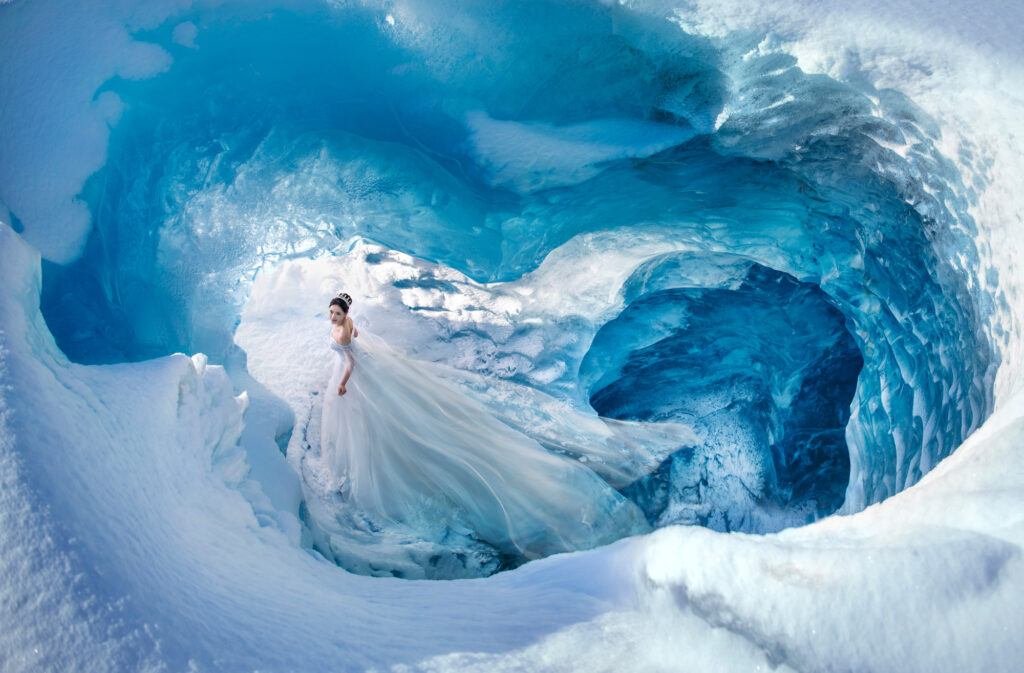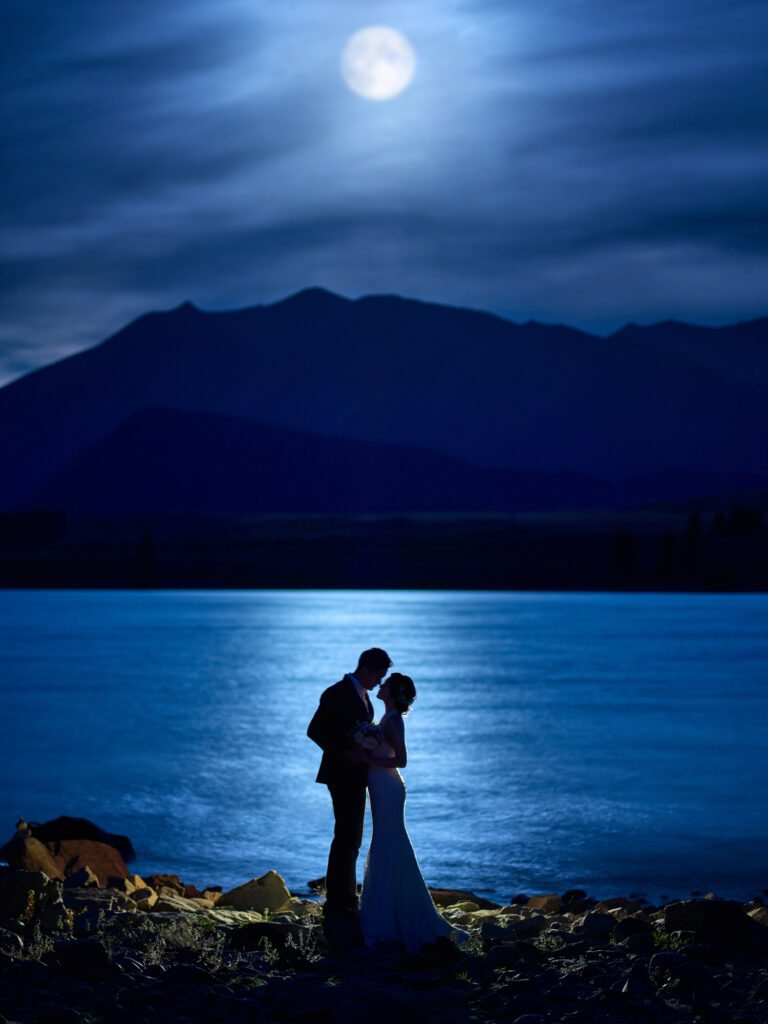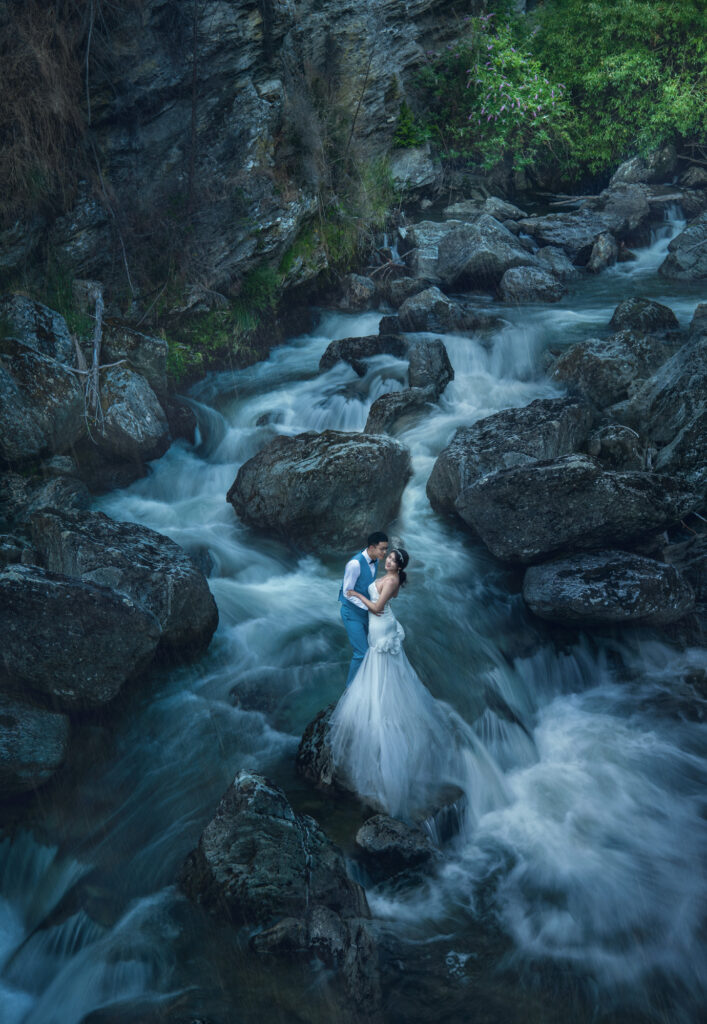Images: Ya Zhuo

Wedding photography is how a lot of amateur photographers cut their teeth in the professional arena, with the ceremonies of friends and family often being the first paying gig for accomplished amateurs.
Whether you’ve gearing up for your first-ever wedding shoot, or you’ve already survived your share of rowdy receptions, there’s always room to get more epic with your wedding shots. And when it comes to epic, you can’t ask for better than Christchurch-based, internationally-awarded wedding photographer Ya Zhuo.
Zhuo moved to Christchurch in 1999 and established his first studio, V2, in 2009. He quickly became a go-to for location wedding shoots for the international tourist market, and over the next five years V2 expanded to Queenstown, Auckland, Sydney, Melbourne, Toronto, Canada, and China. In 2016, he decided to step back from the successful V2 operation, settling down back in Christchurch with wife Christina and a baby on the way.
“I do wedding photography as a hobby now and I enjoy it much better this way,” he says.
He may have stepped back from the business, but Zhuo is still a respected influence in the industry, winning the Wedding Open category of this year’s Iris Professional Photography Awards. The photographer has kindly agreed to share some of his hard-won wisdom with those looking to take their wedding shots to the next level.

Wedding photography may not be a genre in the conventional sense, but just the same it has its own visual language and associated techniques. And just like any other genre, there are stylistic rules and there is plenty of scope to break them — providing you know what you’re doing.
The most sought after wedding photographers in the world become so because they have their own visual style that attracts clients. It might be authentic, editorial, elaborate, minimalist, romantic, cinematic, a combination of these, or something altogether different. The important thing is that it’s clearly recognisable that it is an expression of the photographer’s unique vision.
With Zhuo, a wedding couple knows they can expect breathtaking locations, painterly lighting, theatrical staging, and meaningful connection. His images beautifully entwine subjects with the natural beauty of a scene, composed to tell an emotionally powerful visual story. The photographer says he takes a lot of inspiration from oil paintings of the Renaissance, and the way they depict light, colour, and narrative.

“I studied them, now I paint with my camera,” says Zhuo. “I love to see my photography enlarged, hanging on the wall like a painting that will last through time. I think of wedding photography as not only being about the wedding couple themselves, it should also contain the where, when, emotion, and the area of imagination.”
On the big day, it is important to be intimately familiar with the technical elements of creating a photograph, but when you’re trying to develop your own personal style this area is less important. Instead, it’s your own personal vision — the aspect only you can bring to the shoot — that you really want to work on, Zhuo advises.
“I think it is important that you have a clear vision of what you want,” he says. “Then achieving it is just a matter of sorting out a set of technical issues, which is easy nowadays: you can find answers easily on Google, YouTube. The problem is, if you don’t have a vision, you will not know where to start.”
The most effective way to refine your personal vision is simply to practice, and not just in the traditional wedding photography realm. Find elements from art history that intrigue you, like Zhuo’s Renaissance masters, and experiment with how these elements might inform your own shooting. Tackle different subjects, try different genres, vary your equipment. Then take stock of what works for you, discard what doesn’t, and you’ll find your personal vision starts to make itself known in the images you produce.

It is often remarked that photography is a rather isolated profession. For wedding photographers that may hold true in a psychological sense, but in this arena of photography you can count on being surrounded by a lot of people, a lot of the time. To lift your wedding imagery game, you need to be an efficient part of the team.
The most essential part of collaboration is between the wedding couple and the photographer. They may have very set ideas about what they want or they may be happy to leave that drive up to the photographer — either way, the channels of communication between these parties need to be solid to avoid potential conflict and disappointment.
Exactly how much time you get to spend with your clients will vary depending on timing, availability, and many other factors. It’s important that you make good use of whatever time you do have to communicate and plan.

“We normally meet our clients two times after they confirm their booking,” says Zhuo. “The first meeting just to get to know them and understand what they’re expecting. The second meeting, normally set a week before their shoot, we discuss a detailed plan for the shoot.”
If you are still finding your feet shooting weddings, it can be helpful to put together a ‘shot list’ of the images that are must-haves for both the clients and yourself. This might include candid getting ready images, specific portraits, shots of the venue, decoration details, walking the isle, the first kiss, dancing at the reception, and anything else important on the day.
In time, you won’t need to create a physical list, you’ll know what you want and how to get it. And you’ll be communicating well enough to ensure you incorporate each wedding couple’s unique needs too.
“It’s primarily a collaborative process,” says Zhuo. “Luckily, we’ve had clients who trust us; we have a lot of freedom to create what we want.”
Those attending the wedding are not the only people a wedding photographer may have to work with. There could be planners, hair and makeup artists, florists, and assistants in the mix. Knowing what role everyone plays and how they can fit together like clockwork is key to a smooth day.
Zhuo says how many people he brings on a wedding job is dependent on the shoot’s particulars, but it will generally be himself, an assistant, and a makeup artist.
“When I sold V2 Studios, I kept the processing team I trained — a team of four in China handles all post-processing and printing full-time.”

Because wedding photography can include all types of photos — portraits, landscapes, architecture, macro, photojournalism — it is important to have a kit that is versatile enough to get what you need. However, it is also important to keep your gear manageable enough that you can be quick enough on your feet to get all those shots.
For Zhuo, it is just about having the appropriate tools for the job. For the luxuriant feel of many of his images, the photographer likes to shoot on Phase One and Hasselblad medium-format cameras, but he also has a full-frame Nikon D850 for times when the bulk and slow speed of medium-format just isn’t suitable.
“We mostly use Godox lights,” he says. “They’re built nicely and easy to fix. We’ve had lights smashed on the rocks, went for a swim, soaked in the rain, and covered in snow and most of them survived.”
To create his preferred feel, Zhuo often opts for short or Rembrandt lighting set-ups created with a flash and either a parabolic dish or standard reflector dish.

With a solid kit bag sorted, the other big consideration is location. We are spoilt for choice when it comes to areas of breathtaking natural splendour and a good wedding photographer will always have a choicely curated list of locations to take a wedding couple for epic portraits.
“A good location must be able to complement the narrative you want to portray,” explains Zhuo. “With that in mind, I then look for layers, lighting, colours, etcetera.”
Zhuo’s favourite location to take his wedding couples? The rugged terrain of Aoraki/Mount Cook. Whatever location you do decide on, just be sure you are prepared to work with whatever the weather throws at you on the day.
“I think being able to shoot in any weather is the most challenging aspect, but at the same time, extremely rewarding. A lot of my favourite images were photographed in bad weather or just after the storm had passed.”

For those looking to eventually step into Zhuo’s shoes as one of the country’s leading wedding photographers, he has a few key bits of advice. Take every opportunity to train and practice, try and find someone to mentor you, and, despite the temptation, don’t spend all your money on gear.
“Don’t get me wrong, it is important to have the right tools for the job, but having the best tools isn’t the most important thing. I would suggest, depending on your situation, spend 40 percent of your time, energy, and budget on education, 40 percent on photoshoots (travel, makeup artists, models), and 20 percent on the camera gear.”
Soak up this advice from a master and you’ll be well on your way bringing the same kind of epicness to people’s special day, along with beautiful imagery that will be treasured through the years.
To see more of Ya Zhuo’s work, visit zhuo-ya.com.
Copyright © 2025 Federico Monsalve Limited. All rights reserved.